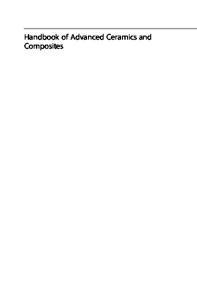Design and Applications of Nanomaterials for Sensors
Design and Applications of Nanomaterials for Sensors begins with an introductory contribution by the editors that: gives an overview of the present state of computational and theoretical methods for nanotechnology; outlines hot topics in this field; and p
- PDF / 13,421,191 Bytes
- 292 Pages / 439.44 x 666.24 pts Page_size
- 89 Downloads / 381 Views
Volume 16 Editor Jerzy Leszczynski Jackson State University, Jackson, Mississippi, USA
This book series provides reviews on the most recent developments in computational chemistry and physics. It covers both the method developments and their applications. Each volume consists of chapters devoted to the one research area. The series highlights the most notable advances in applications of the computational methods. The volumes include nanotechnology, material sciences, molecular biology, structures and bonding in molecular complexes, and atmospheric chemistry. The authors are recruited from among the most prominent researchers in their research areas. As computational chemistry and physics is one of the most rapidly advancing scientific areas such timely overviews are desired by chemists, physicists, molecular biologists and material scientists. The books are intended for graduate students and researchers. More information about this series at http://www.springer.com/series/6918
Jorge M. Seminario Editor
Design and Applications of Nanomaterials for Sensors
1 3
Editor Jorge M. Seminario Department of Chemical Engineering 3122 TAMU Texas A&M University College Station Texas USA
ISBN 978-94-017-8847-2 ISBN 978-94-017-8848-9 (e-Book) DOI 10.1007/978-94-017-8848-9 Springer Dordrecht Heidelberg London New York Library of Congress Control Number: 2014940055 © Springer Science+Business Media Dordrecht 2014 This work is subject to copyright. All rights are reserved by the Publisher, whether the whole or part of the material is concerned, specifically the rights of translation, reprinting, reuse of illustrations, recitation, broadcasting, reproduction on microfilms or in any other physical way, and transmission or information storage and retrieval, electronic adaptation, computer software, or by similar or dissimilar methodology now known or hereafter developed. Exempted from this legal reservation are brief excerpts in connection with reviews or scholarly analysis or material supplied specifically for the purpose of being entered and executed on a computer system, for exclusive use by the purchaser of the work. Duplication of this publication or parts thereof is permitted only under the provisions of the Copyright Law of the Publisher’s location, in its current version, and permission for use must always be obtained from Springer. Permissions for use may be obtained through RightsLink at the Copyright Clearance Center. Violations are liable to prosecution under the respective Copyright Law. The use of general descriptive names, registered names, trademarks, service marks, etc. in this publication does not imply, even in the absence of a specific statement, that such names are exempt from the relevant protective laws and regulations and therefore free for general use. While the advice and information in this book are believed to be true and accurate at the date of publication, neither the authors nor the editors nor the publisher can accept any legal responsibility for any errors or omissions that may be made. The
Data Loading...











